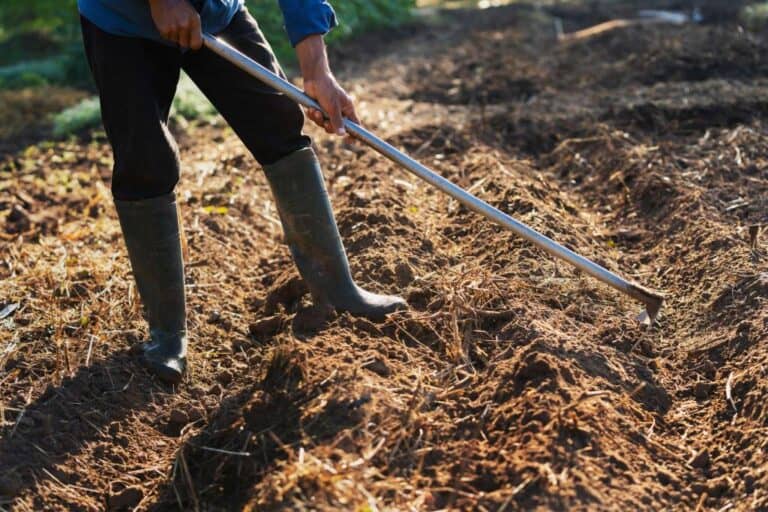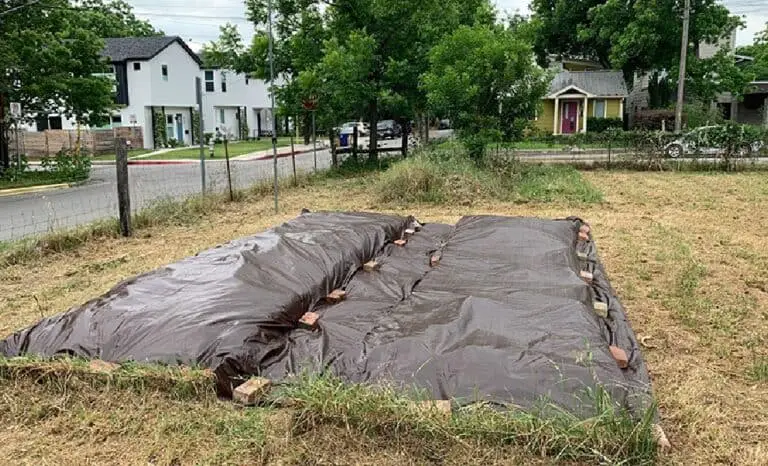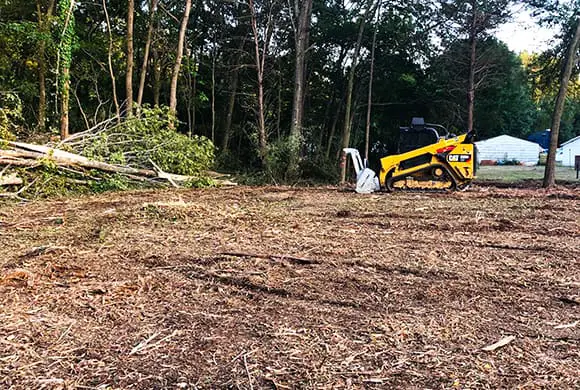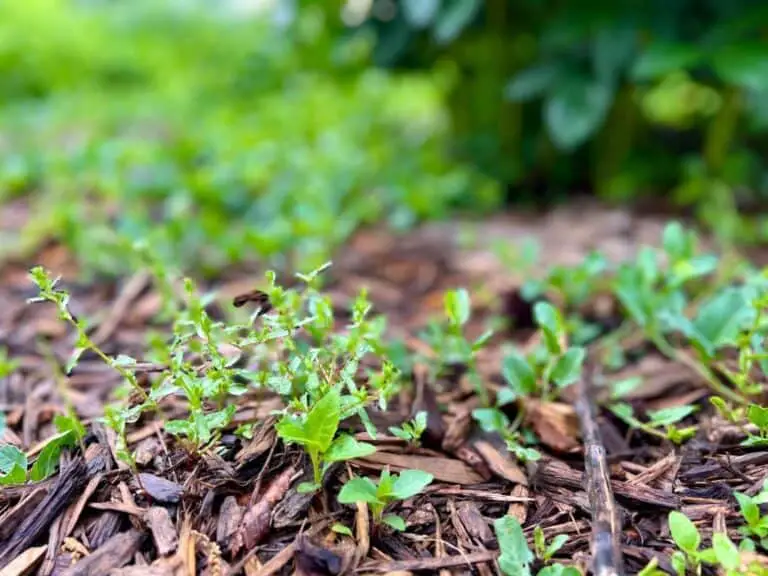How Often To Water Cucumbers Plants in Pots & Raised Beds?
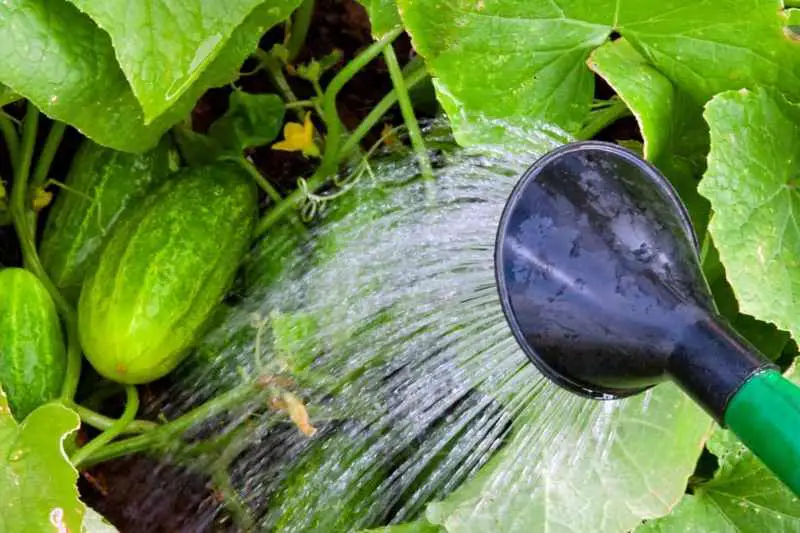
Cucumbers are a popular garden vegetable because they are easy to grow. Cucumbers are a vine plant and need plenty of water to produce fruit. The amount of water you need to give your cucumber plants will depend on the weather, the type of soil, and how much rain your area gets.
Generally, you should water cucumber to keep the soil moist but not wet. Water cucumbers less frequently with deeper watering. Deep watering promotes deep root growth as the topsoil drys and roots are forced to dig deeper for water.
Another benefit of watering deeply but less often the shallow roots of the cucumber plant don’t sit in wet for prolonged time periods which can lead to root rot.
Water cucumbers with 1″ of water a week early in the season, when temperatures are lower and the cucumber plant is in its vegetative cucumber growth stage. Water with 2 inches of water a week as the season gets hotter, and the cucumber plant gets large, starts to flower, and produce fruit.
Add rainfall into your figuring. We use wunderground.com to know the expected rainfall and a rain gauge in the garden for an accurate figure of rainfall.
If you use a sprinkler and the rain gauge is in the waters path you’ll be able to tell how much time passes for it to fill with 1/2″-1″ of water. Another way to know is 1″ of water = 0.6 gallons per square foot. Add rainfall into your figuring.
By watering evenly with 1″ of water, soil will be wet 5-6 inches down. This way the plant still has access to water after the topsoil dries.
Another way to check if you need to water or not is to put your finger in the soil 3-4″ deep, right in to pots & raised beds. If it is dry you should water and if it’s moist leave it be.
How to Check if Your Cucumber Plants Need Water?
When you are watering your plants, it is important to know when they need it and how much water they need it. This is especially true for cucumber plants, which require a lot of water to grow big and healthy.
One way to tell if your cucumber plants require water is to lift the pot and see if it is heavier than when you last watered it. You can also lift the plant and check the weight; if it feels light, then it likely needs water
Another way is to check the moisture level by sticking your finger in the soil. If the top two inches of soil are dry, then the plant needs water.
You can also tell by watching how the leaves droop during the day; if they are drooping, then the plant needs water.
A final way to tell if a plant needs water is to look for a reservoir at the bottom of the pot. If there is no reservoir, then more water needs to be added. You need to keep the moisture in. Putting mulch around the plants can help this. This also helps you cut down on how often you water the cucumbers.
Cucumber Watering Tips
Watering Containers, Pots, and Raised Beds – You want to water containers thoroughly and slowly so that water gets evenly distributed throughout the container. You can forget about watering 1″ deep and know you’ve watered enough when the water is draining out of the bottom more than a dripping. If you water too fast, it’ll drain from the bottom, but the water won’t be evenly distributed and there will be dry spots left in the container.
There are two reasons to water containers all the way through, and that is to wet the soil throughout the container and to prevent the build-up of salt and minerals at a certain level. This build-up can happen if the plant only gets watered halfway over and over.
Watering through flushes the soil evenly.
Make sure your pot is well-draining. If something seems off it’s also possible for a “perched water table”, or pocket of water, to form in a container which can be resolved by tilting the container to 45 degrees and holding it there in a few different directions.
If you want to get more scientific than “water through the container slowly” here is a scientific article on using a container’s weight to determine water requirements. Here’s a cool quote from the article.
In container nurseries, water is the most important, and perhaps the most dangerous, chemical used (Dumroese 2012)
Water Slowly and Evenly At Their Base – Water the cucumber plants at their base where the roots are. This is easy to tell if you have nice elevated rows or mounds. Water slowly and evenly so that you don’t erode the dirt where plants are planted.
Hill Up Mounds or Rows – Cucumber plants are commonly grown in mounds or rows. If you’re growing in mounds, you probably have them hilled up already. If you’re growing in rows elevate the row before planting cucumbers by mounding dirt together about 8″ high in a row. Hilling will help water drain better and ensure that the cucumbers are not sitting in a pool of water with heavy rains.
Water Deep & Sometimes Right After Rain – Watering deep and less often is important for the shallow rooting cucumbers. This way we avoid leaving the topsoil regularly drenched, which can lead to root rot.
If you know that you only got a 1/8″-1/4″ or so of rain, consider watering after the rain stops to make for a deeper watering. If you water with 1″ of rain it will wet the soil 5-6 inches down.
Keep Foliage Dry – Watering from a ground irrigation system is preferred to overhead watering to keep the foliage dry. Growing on a trellis is an easy solution to water the soil without wetting the foliage, and it increases air circulation.
Powdery mildew can be a problem for cucumber plants and occurs with wet hot conditions and foliage that sits on top of itself. If you’re growing cucumbers on the ground, watering in the morning can give the foliage a chance to dry out as well as let the water sink in before evaporating off.
Take Soil Type Into Consideration – You want to create the best soil condition to grow your plants. If your soil is sandy, water will drain quickly and more frequent watering will be necessary. If your soil is heavy clay, water will stay in the soil for longer, and you’ll need to be wary of pooling and prolonged periods of consistent moisture that can cause root rot.
Whichever soil type you have, adding mulch is the right move to make your soil loamier. This will help sandy soil retain moisture and heavy clay soil to drain better and have more aeration and easier root growth.
Hot Weather, Flowering & Fruiting – During spells of hot weather and during the times when cucumbers are flowering and producing fruit, water more frequently. Check moisture levels by feeling the soil in the ground 2-3 inches deep. If it’s moist maybe you can hold off, but if it’s dry down a few inches you definitely need to water.
Mulch – Mulching can help your soil retain moisture when the weather is hot. It can also insulate soil temperature and keep the temperature cooler when it’s hot and warmer when the air is cold. Check out this article from the farmer’s almanac for everything about mulch.
Do Cucumbers Plant Need A Lot Of Water?
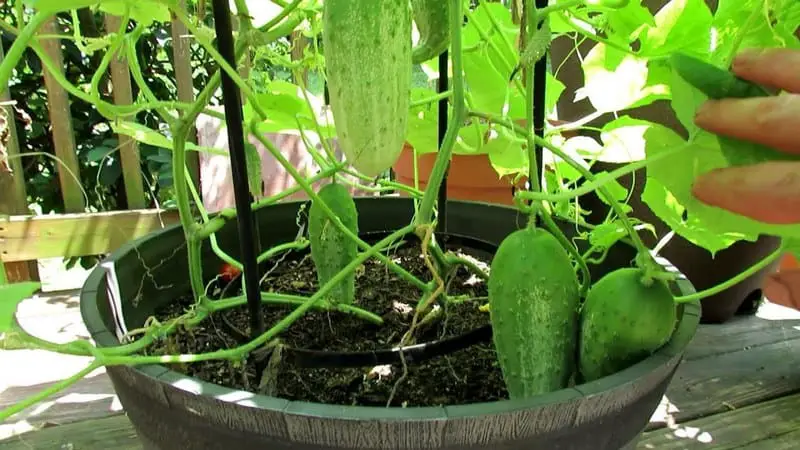
Cucumber plants do need a lot of water, cucumber plants are thirsty! How much water they need each week depends on the rainfall in your area.
They require less water at the beginning of the season and more as the season goes on. Cucumber plants should get 1-2 inches of water a week, including rainfall. By watering deeply and less frequently, we can avoid consistently drenched topsoil, which puts the shallow rooting cucumber plant at risk of root rot.
In general, you should water cucumber plants deeply once a week, until the soil is drenched. If the weather is hot and dry, you may need to water more often.
Increasing the soil temperature can also increase the amount of water cucumber plants need. Cucumber plants need more water as the season goes on. Temperature increases and plants getting larger and starting to produce flowers and fruit are the causes of this.
You want the topsoil to dry out at least 1″ deep before watering. If it’s dry 3-4 inches down, it’s definitely watering time. You can know if the topsoil is dry by putting your fingers into it!
If you live in an area that does not receive rainfall every week, then be sure to water your plants deeply. Drench the soil around the plants until water begins to drip from the bottom of the pot. A temperature increase of 10 degrees can also increase a plant’s water needs by 50%. So, if it’s hot outside and your plants are wilting, be sure to give them more water.
What Happens If You Overwater Cucumbers?
In a garden, nothing is worse than an overwatered plant. By over-watering, you may assume that you’re doing your cucumbers a favor by leaving their roots to sit in wet soil, which can harm and quickly kill them.
Cucumber plants benefit from less frequent, deep soaking watering. This is because it promotes them to develop strong, deep roots rather than weak, shallow roots. The simplest way to tell if you’ve watered your cucumbers properly is to keep an eye out for both healthy development and issues.
Leaf Yellowing
Leaf yellowing in cucumber is a common problem that can be caused by overwatering. When the roots of a cucumber plant are constantly wet, they become damaged. Roots can’t absorb enough nutrients and the leaves will start to turn yellow. Leaves that have become yellow due to overwatering are likely to be stunted and limp, and they may even fall off the plant altogether. This can also cause the cucumbers to fall off the plant.
When this happens, examine the drainage around the base of the cucumber and lower the amount of water you are giving. The area around the plant’s base should never be wet.
To prevent this, you should water your cucumber plants only when the soil is dry to the touch.
Root Rot
Shallow roots of plants that constantly sit in wet soil will have a higher chance of developing root rot. Root rot is a plant killer. The shallow roots of the rot sitting in water turn to mush killing the root system of the plant.
If you’ve noticed that the soil around your cucumber plants has been wet for an extended period of time or started seeing the plants turning yellow and wilting, they might be overwatered.
With some root rot plants can be saved by being uprooted and transplanted elsewhere but if a large part of the root system has been compromised the plant is most likely not saveable.
Powdery Mildew

Powdery mildew is a common fungal disease that affects cucumbers, and can be sign of overwatering. The fungus first appears as a white powder on the leaves of the plant. The disease can cause the leaves to turn yellow and may eventually lead to the death of the plant.
Powdery mildew can be treated with an antifungal spray, but it is important to start treatment early, before the disease has a chance to spread.
Overwatering can increase the risk of powdery mildew, so it is important to water cucumber plants carefully. Older leaves are more prone to powdery mildew, so it is important to remove any dead or diseased leaves from the plant. Sunburned leaves are also susceptible to powdery mildew, so it is important to protect cucumber plants from direct sunlight.
What Happens If You Underwater Cucumbers?
Bitter cucumbers can be the result of insufficient water or under-watering. When cucumbers don’t get enough water, they start to produce the bitter cucurbitacin compound as a means of self-defense. This bitterness is usually concentrated in the skin and seeds of the fruit.
To avoid having bitter cucumbers, make sure to moisten the soil regularly and give your plants a deep watering at least once a week. Don’t forget to give mulching with 1 to 3 inches of straw or shredded bark, to maintain soil moisture.
Another way to reduce bitterness is to harvest your cucumbers early before they have a chance to produce too much cucurbitacin.
Keep in mind that cucumbers like wet soil, so you may need to water them more often if the weather is hot and dry. You need to water them often to increase cucumber yield production.
Conclusion
In conclusion, watering cucumber plants is important for their growth and productivity. However, there is no one-size-fits-all answer to the question of how often to water them. You will need to experiment to see what works best for your plants in your climate and soil type.

